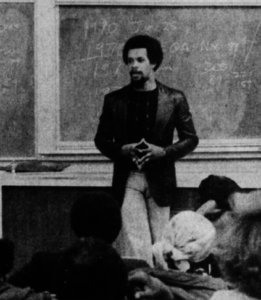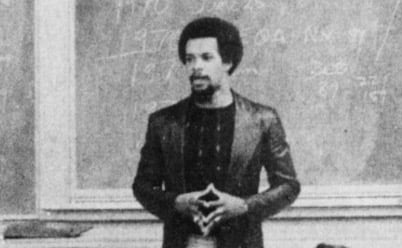
The feature “On This Day in Stanford History” details unusual or humorous events that occurred on the same date or week in past years from the Daily archives.
According to the Stanford Daily archives, on May 23 in…
1910: The Women’s Christian Temperance Union of Palo Alto awarded student D.H. Houser $50 for the best “scientific temperance” essay submitted among contestants. The essay was forwarded for a statewide essay contest on the same topic.
1918: University photos taken in the Quad were printed on a Miehle printing press machine for the first time, leading to “a new mark in quality and clearness.” A Daily staffer dedicated several paragraphs to describing the new printing process in exquisite detail. Also, the Student Affairs Committee voted to remove student government for the period of wartime due to a lack of “responsible upperclassmen” on campus during World War I.
1933: “Is there a young English male student, 21 years of age or older, who wishes to correspond with a young woman?” begged a letter to the Registrar, published in the Daily. Apparently, the Registrar was used to receiving a variety of letters — each of which was answered — on topics such as “growing of vegetables by women, care of the teeth and even a request for some silk-worm eggs for a sixth-grade geography class.”
Also, students feared an impending ice age, an idea The Daily said was “upheld but slightly by the campus temperature charts.”
1941: In an article called “Traditions Respected on Stanford Campus,” a staffer bragged that traditions of daily dress were upheld at Stanford even while other universities faltered. For instance, women “are not supposed to — and do not — wear bobbie socks or go stockingless on the Quad. They always wear silk stockings.”
In the same issue, an article called “Women’s Regulations Keep Up-to-Date,” quoting from former University rulebooks on female conduct, celebrated that women had achieved more equality since the 1920s when they were not allowed to attend off-campus parties.
1949: As mononucleosis struck campus, a Daily article compared the disease to an “iceberg, in which the top one-eighth is the only part of the disease pattern that is seen.” Meanwhile, an impassioned op-ed writer named Al Allen argued against the possible establishment of a student-run committee to allocate hashing jobs on the grounds of creating “social discrimination” around hashers.
1952: A group of students broke into Roble, Branner and Hulburt House (now Slavianskii Dorm), ransacking several rooms in search of women’s underwear. The so-called “panty raiders” racked up over $700 dollars in damage, including the loss of one fire escape ladder that was stolen in the rush for the panties. Said H. Donald Winbigler, then-dean of students: “I read about panty raids everywhere, but I just didn’t think this sort of thing would commend itself to our campus. I have come to expect from Stanford students a level of performance which is above average in maturity of judgment. Nine times out of ten this is fully realized.”
1963: Highlighters, or “yellow-marking pens,” took over campus like wildfire after the manager of the Stanford bookstore ordered them on a whim. “The pens are selling at the rate of close to four dozen a day,” noted The Daily. “Theories have been flying fast and furiously around campus as to advantages and disadvantages of the pens as a study aid.”
1967: Despite estimates that rates of marijuana usage at Stanford had exceeded 50 percent, most students reported not being able to discuss drugs with their parents. Two researchers, John I. Maurer and Emily Garfield, attributed this to the belief among parents that drugs were inherently wrong. “Thus the generation that crawls out of bed to a Tirend, takes a Compoz to counteract the Tirend jitters, and a few aspirin on the side to feel better before that Sleep-Eze at night, can’t see why students accept marijuana, and wonder where they got the idea,” The Daily explained.
1978: A Black Community Meeting discussed recent grievances, particularly a recommendation from the Food Research Institute that then-Professor of Economics Tetteh Kofi not receive tenure. Kofi had been brought to Stanford after demands that third-world economics courses be taught at the University.
Luckily for MCAT test-takers, it was discovered that 90 percent of tests taken in April were misgraded. In all cases students were to receive higher grades than they initially thought.
1984: A law professor named John Kaplan, famous for his sense of humor, sued Newsweek for $1 million over an article called “A Giggle of Guts” that he said mocked one of his courses.
At the same time, the ASSU encountered funding problems when trying to get magnetic identification cards on campus for the first time, as installing card-reading machines in fact cost millions of dollars.
2002: The horoscope section focused exclusively on bacon, explaining that “in the Middle Ages, bacon was very expensive, and was thus a status symbol and very desirable to have. Just like a Palm Pilot!” Students also received this advice: “Getting it on? Instead of a sock, put some bacon on your doorknob.”
Contact Fiona Kelliher at fionak ‘at’ stanford.edu and Neel Ramachandran at neelr ‘at’ stanford.edu.
